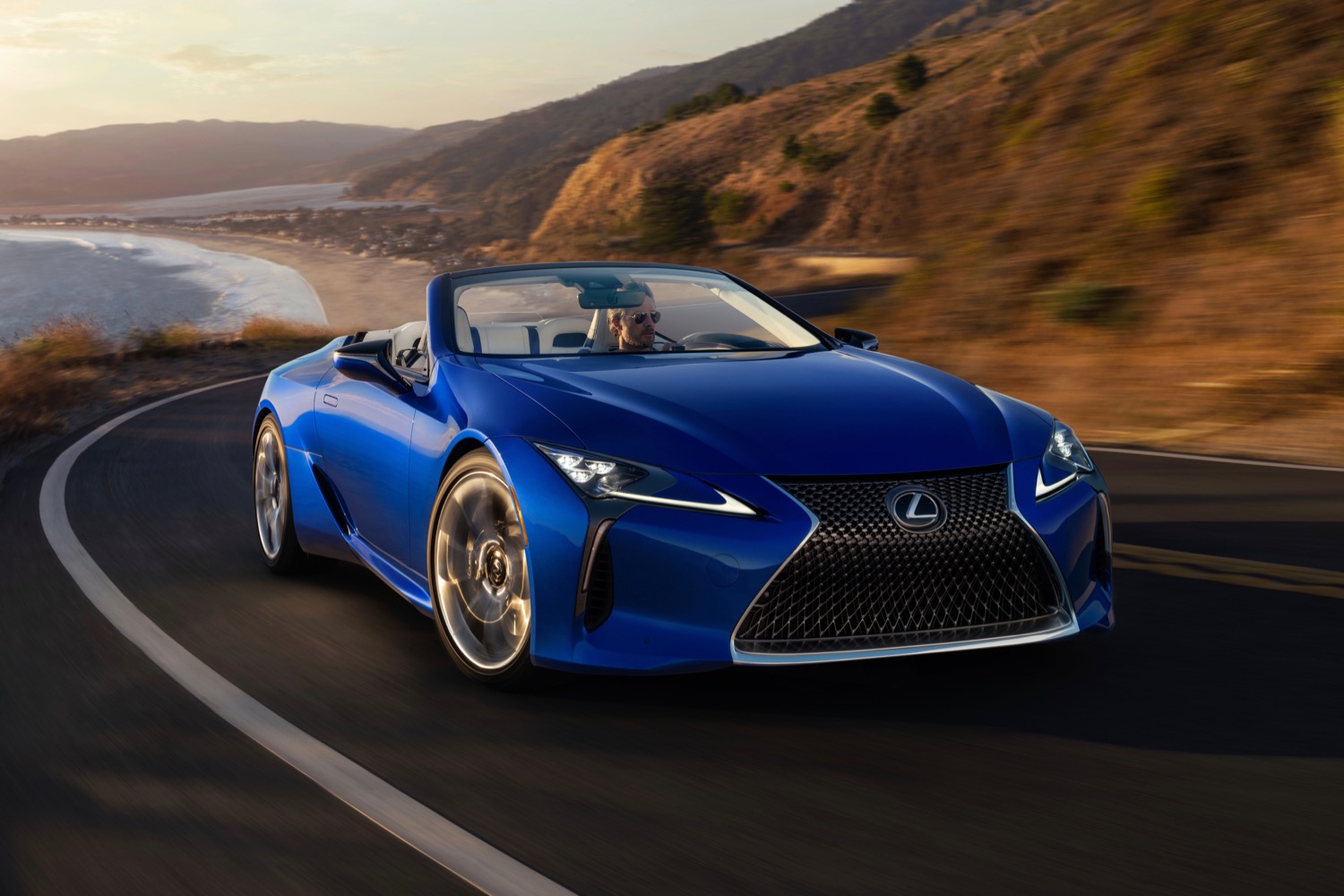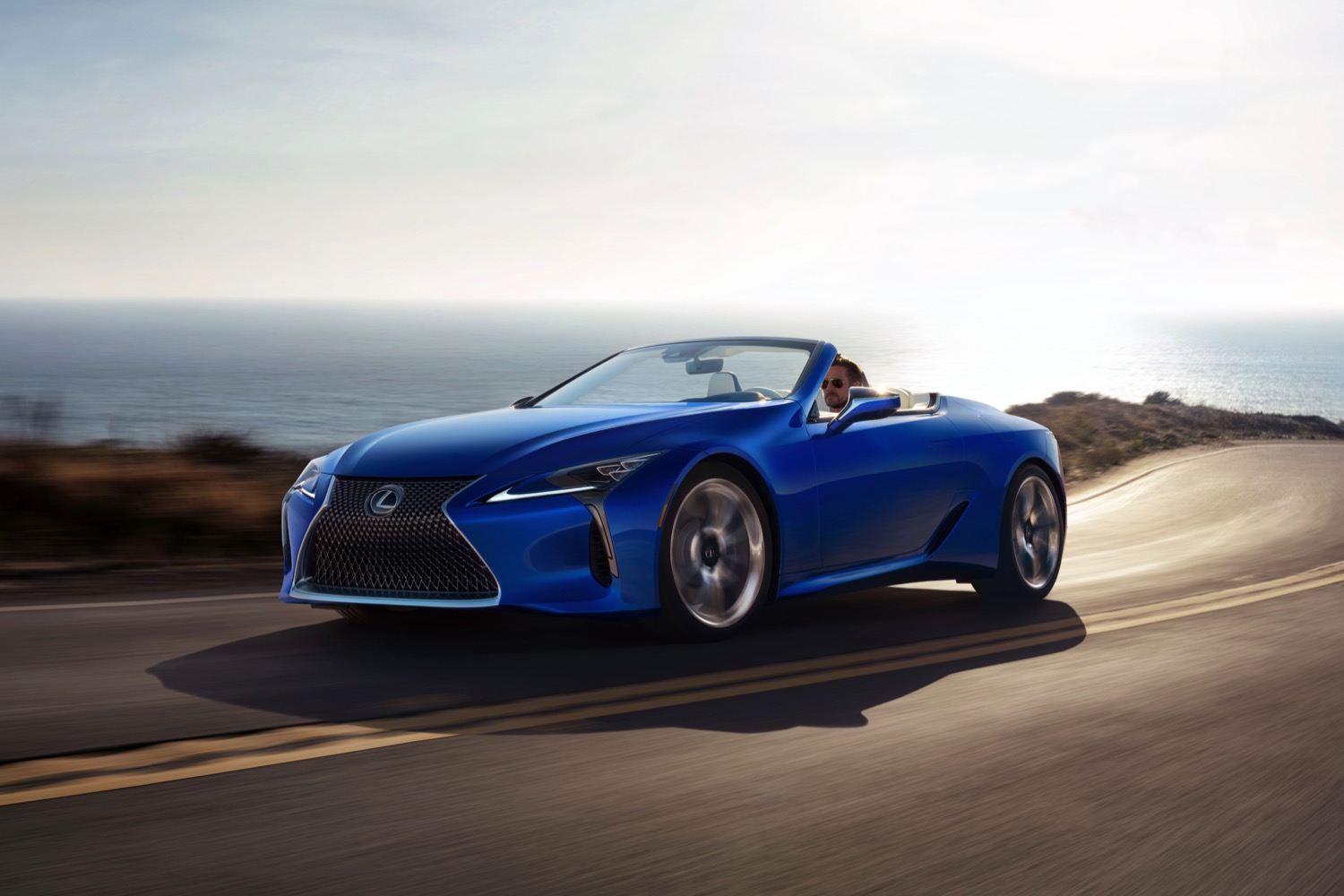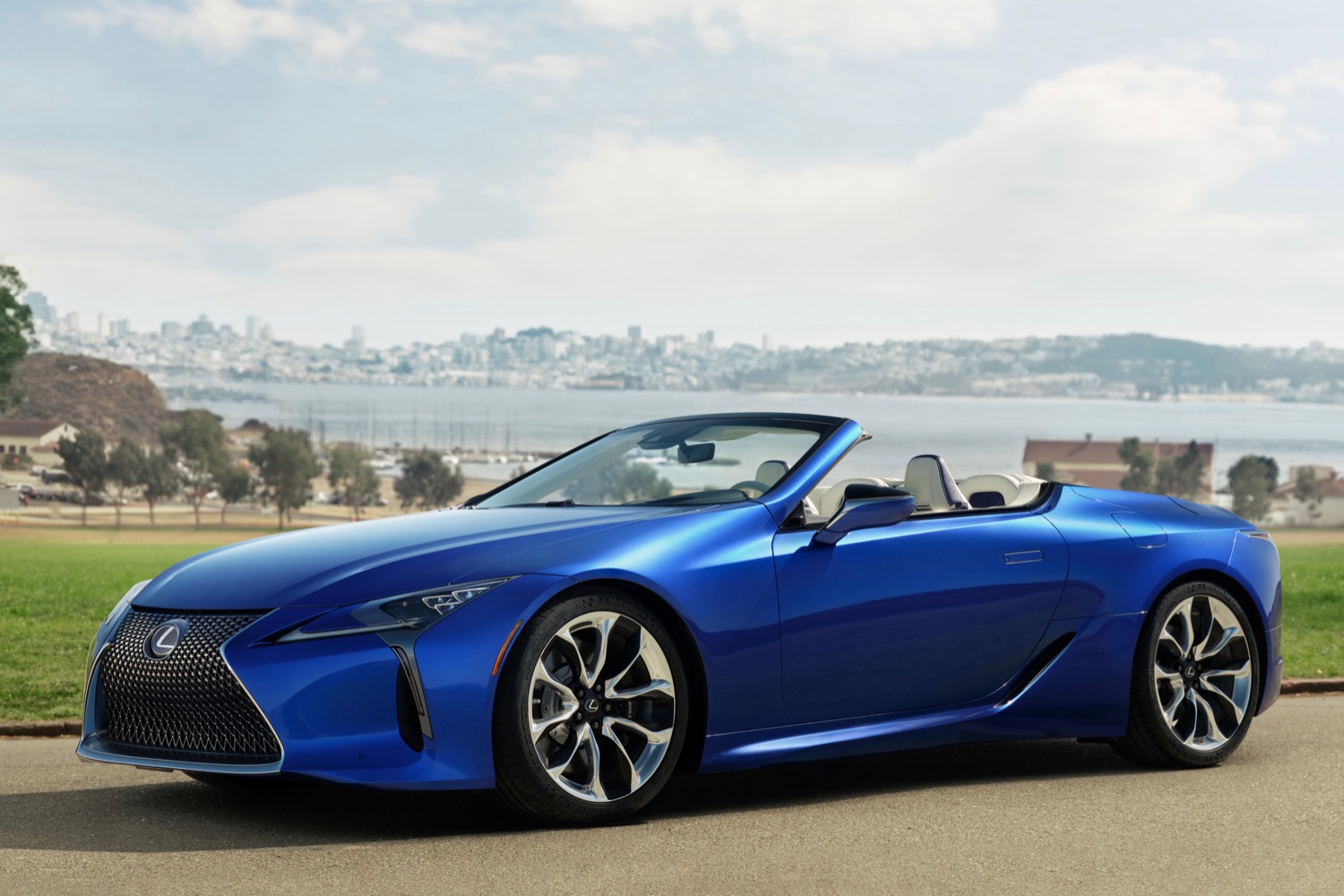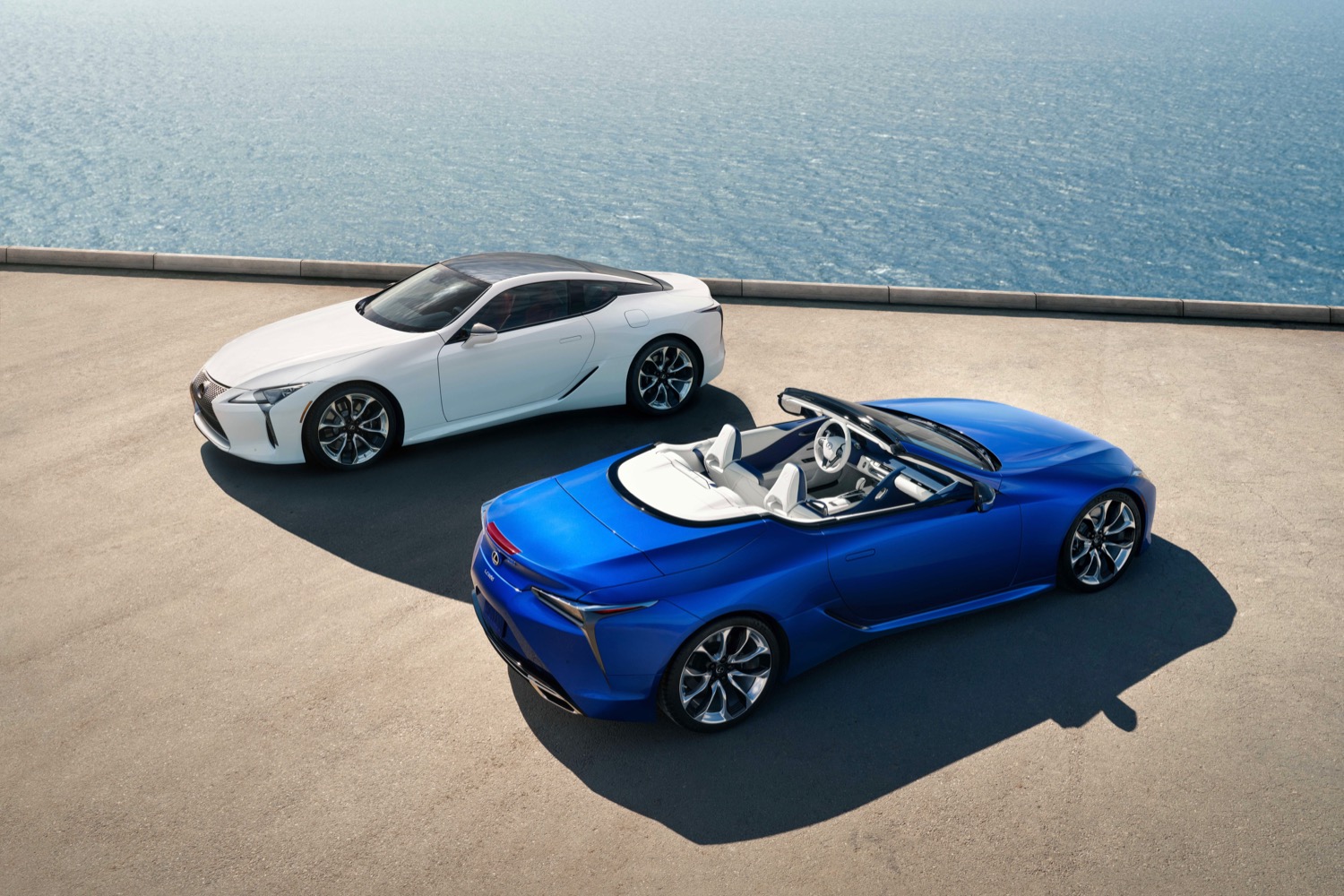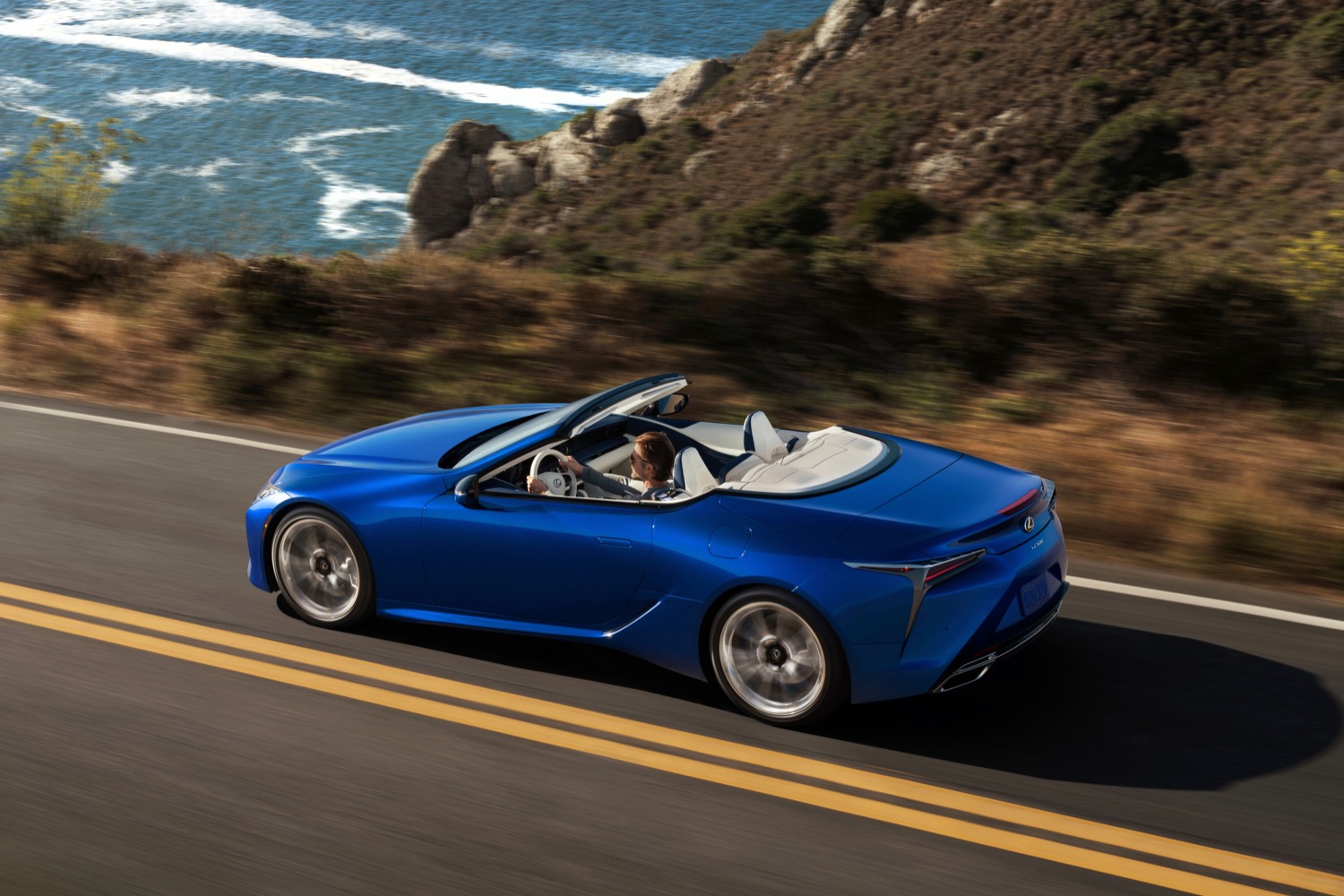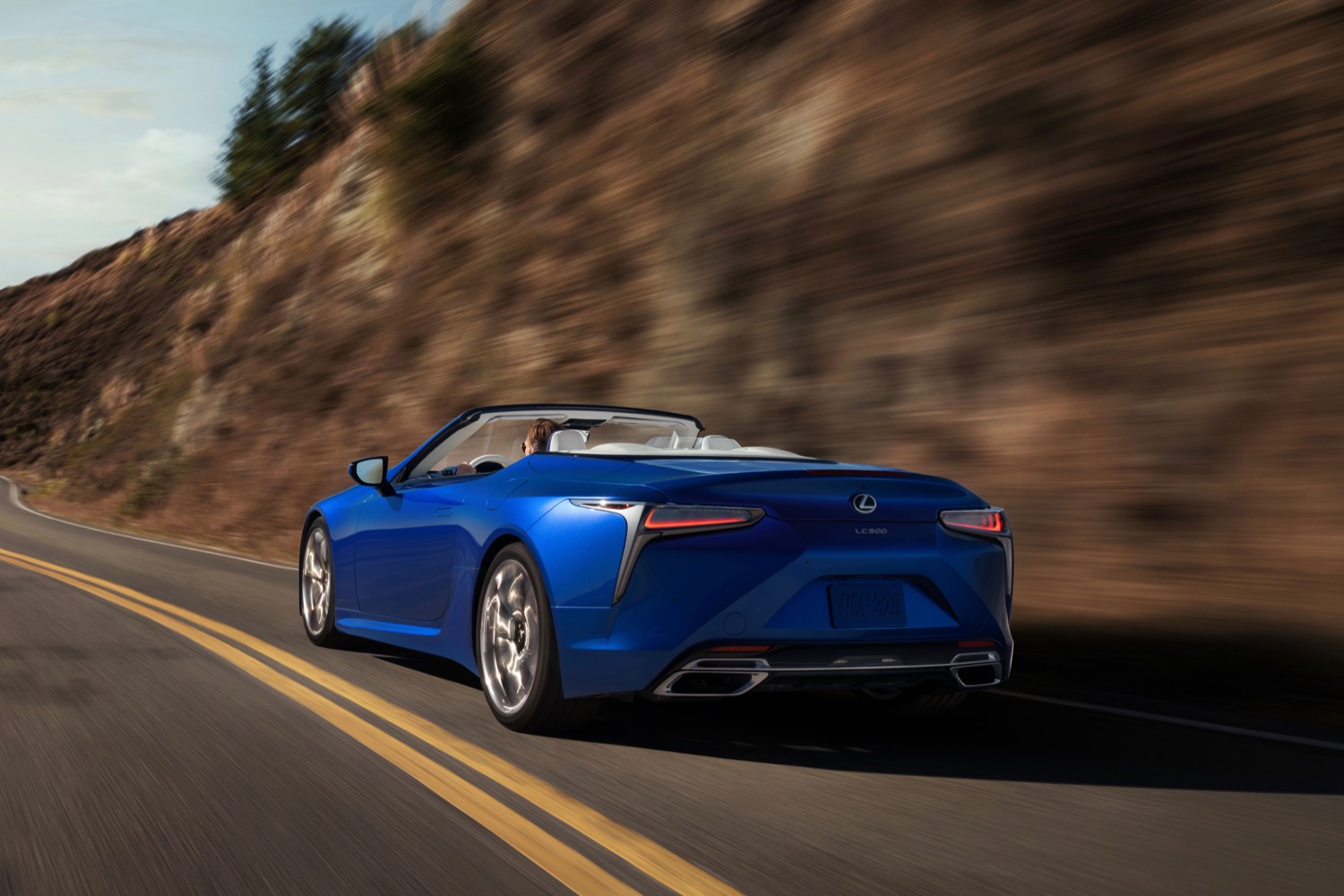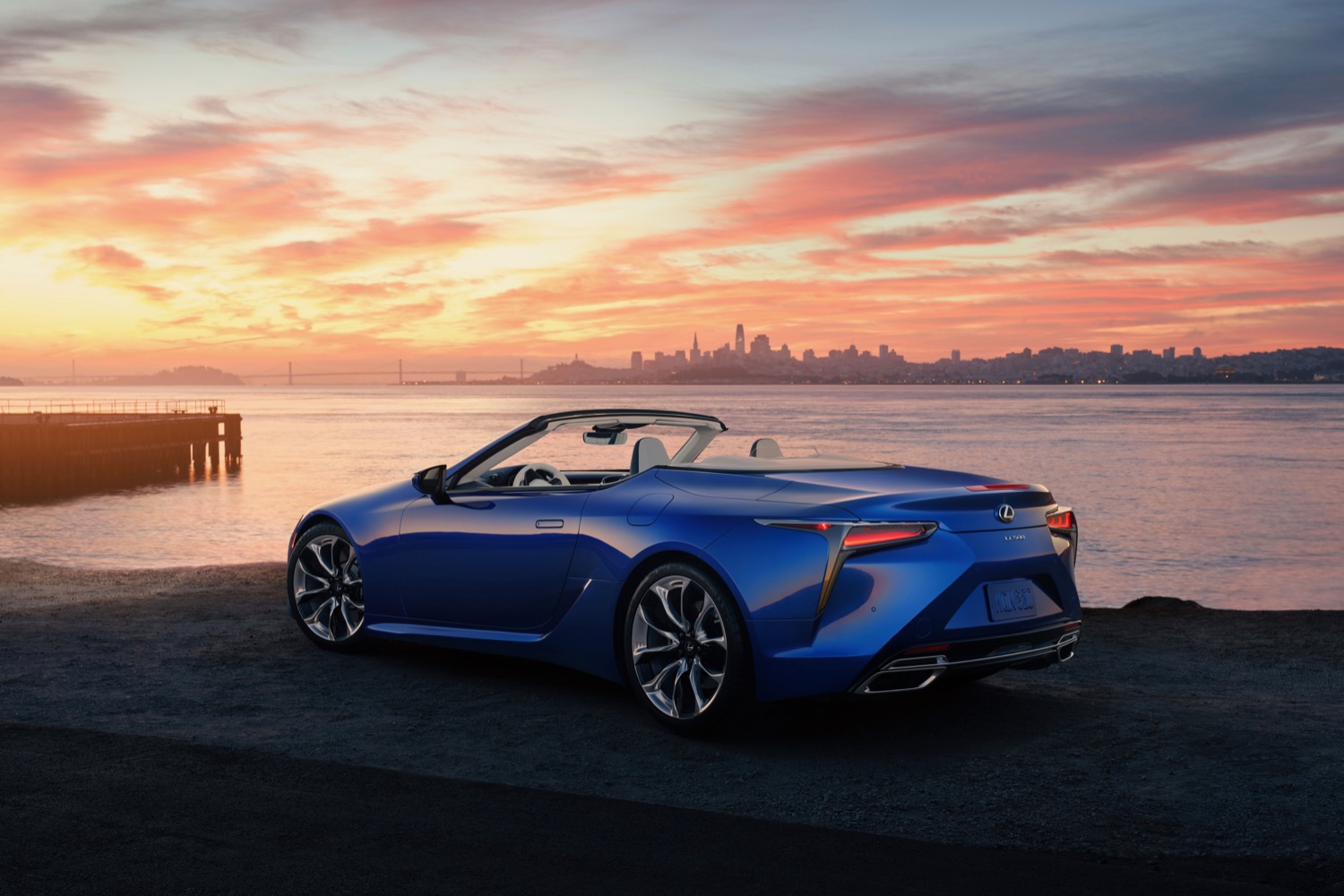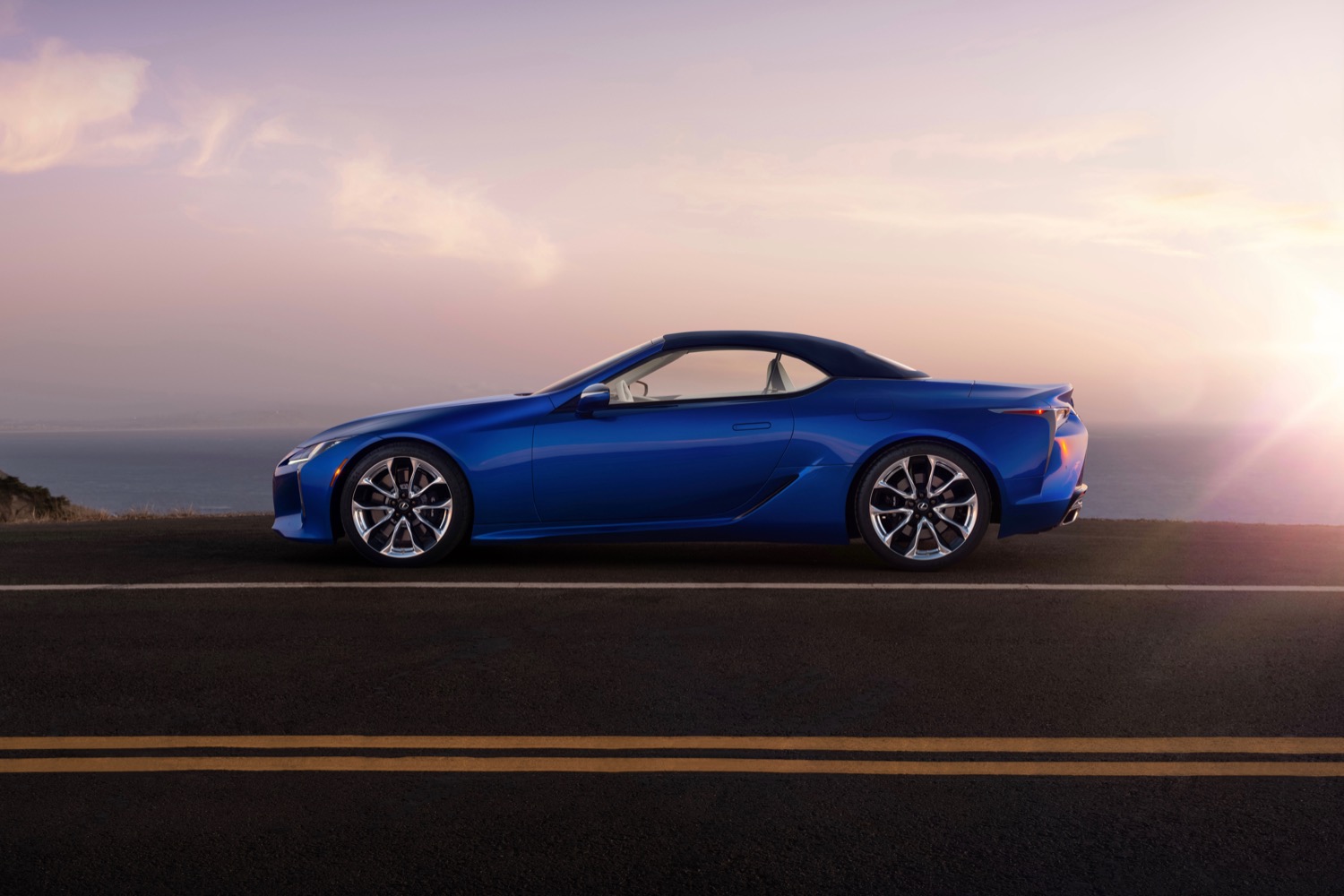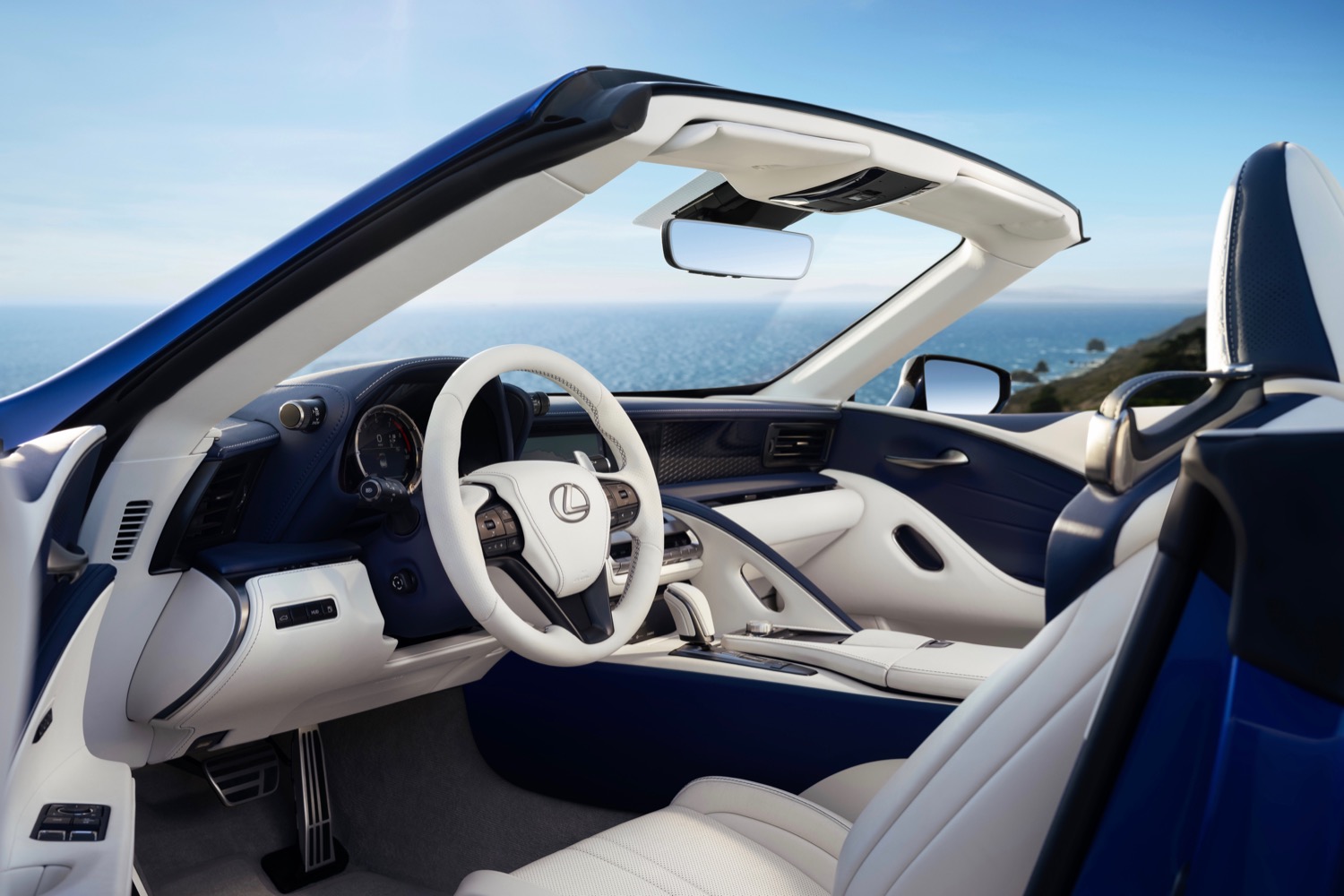It was only a matter of time. A convertible top was the perfect match for the sleek styling of the Lexus LC, and besides, the cars Lexus’ flagship was designed to compete against have always been available as convertibles. Still, we had to wait until the 2019 Los Angeles Auto Show to see the 2021 Lexus LC 500 convertible in production-ready form. Sun worshippers will have to wait until summer 2020 to put it in their driveways.
Lexus previously showed the LC convertible both as a concept car and a preproduction prototype, so there isn’t much mystery here. Engineers went with a soft top, rather than a retractable hardtop, because it doesn’t have as significant an impact on cabin or trunk space, according to Lexus. The top takes 15 seconds to open, and 16 seconds to close, at speeds up to 31 mph, in case you were wondering.
Under the skin, Lexus added structural bracing to account for the loss of a fixed roof. That, along with the top and its mechanism, adds weight. Some of that was counteracted by using a die-cast aluminum rear suspension brace. The suspension tuning is also different from the LC coupe, according to Lexus.
Like the LC 500 coupe, the convertible is rear-wheel drive, with a 5.0-liter V8 up front. Coupled to a 10-speed automatic transmission, the V8 produces 471 horsepower and 398 pound-feet of torque. While Lexus offers a hybrid version of the LC coupe, a hybrid convertible hasn’t been mentioned.
To make convertible season last as long as possible, the LC’s climate control automatically adjusts when the top is up or down. Neck warmers should make driving in cooler weather more pleasant, and the climate control will automatically send warm or cold air to the back of the driver’s hands when gripping the steering wheel, according to Lexus. The shape of the body was also designed to help reduce wind buffeting, Lexus claims (the LC also has a conventional wind deflector).
Like other Lexus models, the LC is set to get Android Auto, alongside the previously available Apple CarPlay and Amazon Alexa connectivity. A 10.3-inch display screen handles infotainment functions.
Pricing won’t be revealed until closer to the car’s launch, but Lexus noted that the version displayed at the L.A. Auto Show will be an Inspiration Series special edition. Production will be limited to 100 cars, all in Structural Blue with a blue top and semi-aniline leather interior. Lexus previously did an Inspiration Series version of the LC coupe.
